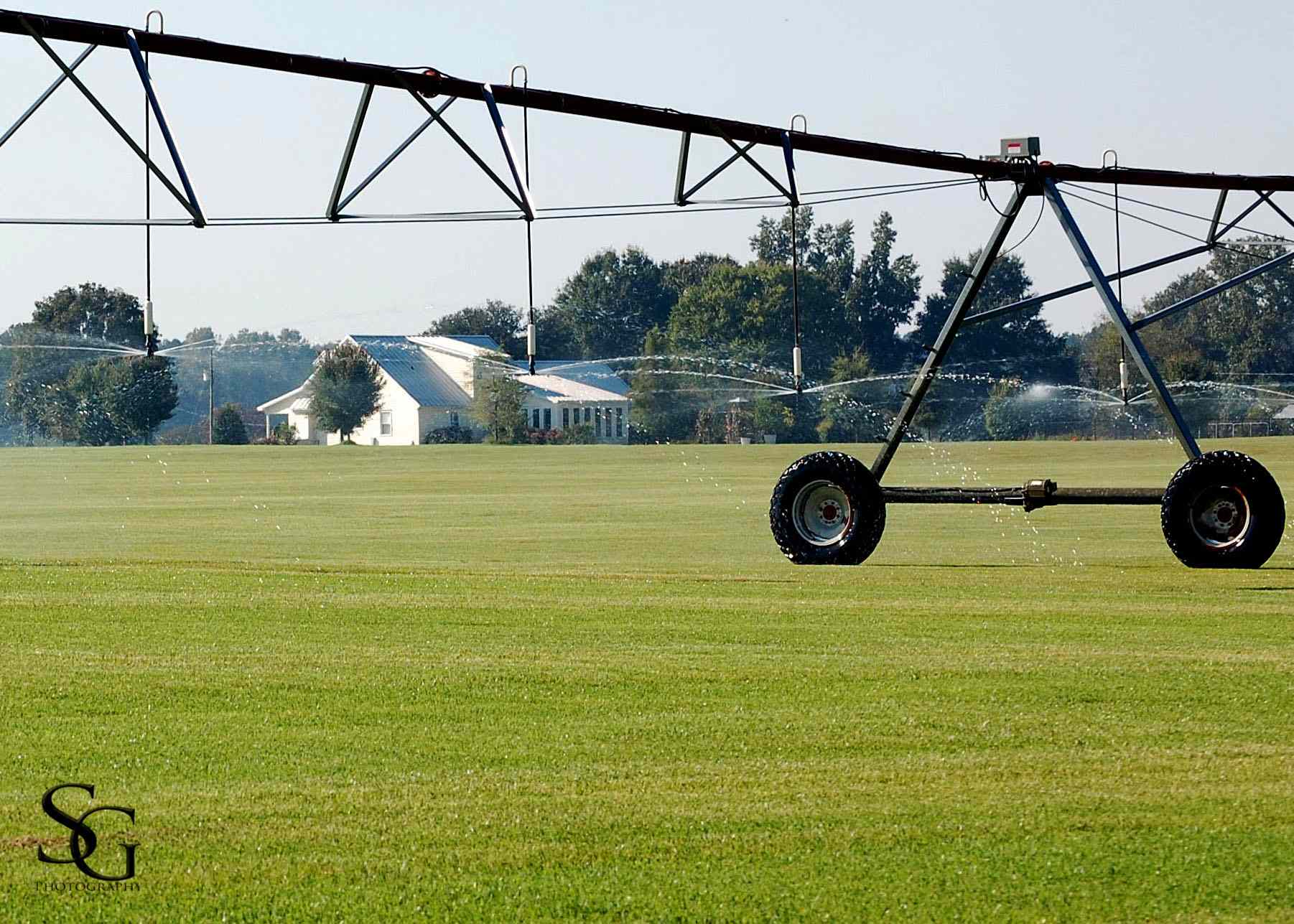Farm Equipment, Old and New
By: Amos S. Eno
Posted on:06/01/2011One Example of How Farmers Must Adjust, Recalibrate, and Innovate Their Operations to Stay in Business
This is a continuation of the post from last week, about M. Marsh Farms in South Carolina.
M. Marsh Farms began as a family-run poultry production operation, much like the North Carolina farm Marc grew up on, helping his parents.
Never Put All Your Eggs in One Basket

No matter how good things are, it has still been difficult for Marsh to - pardon the pun - put all his eggs in one basket! He wanted to have some part of his operation that is not dependent on the Chicken Board of Trade and that he could grow as a cold crop. Since commodity prices were low when he began farming, Marsh focused on turf grass.
In 2003, he converted the remainder of his cropland to turf, and it brought the maximum dollars per acre for a small farm. He’ s still making more per acre than most, but since 2007 when the economy slowed, his demand for turf grass from developers has declined. The demand for remodeling, golf courses, and sports fields has increased, however. Marsh’s turf operation involves the planting of sprigs of zoysia grass to grow sod. This half of his operation puts him in a position of strength to replace his poultry income, if it ever becomes necessary. Another alternative is to expand into crops.
s still making more per acre than most, but since 2007 when the economy slowed, his demand for turf grass from developers has declined. The demand for remodeling, golf courses, and sports fields has increased, however. Marsh’s turf operation involves the planting of sprigs of zoysia grass to grow sod. This half of his operation puts him in a position of strength to replace his poultry income, if it ever becomes necessary. Another alternative is to expand into crops.
Minority Farmer in the Deep South
Marsh is an African American farmer, but he says, “I don’t consider myself a minority first, but a farmer first. Once people kind of scratch in the dirt, the similarities among all farmers emerge. The lending institutions and USDA have been the best.”
Ironically, one issue with the potential to affect Marsh’s operation, as well as many others in America, is that of immigration. “Immigration and farm labor availability are going to be key factors in keeping costs in line with what Americans are used to paying for food products. Our future is going to evolve around our ability to automate and pursu e energy reducing technologies.”
e energy reducing technologies.”
Marsh has cooperated with the Natural Resources Conservation Service (NRCS) and served on the Chesterfield County Soil Conservation District (SCD) board for the last four years. It involves monthly meetings to address problems, such as water quality management or getting word out into the community about the availability of federal funds.
Marsh has some SCD projects on his own land too. He constructed two irrigation ponds, and “we have ponds to catch runoff and reuse water. We also have the joint project with the South Carolina Energy Office, which helped to install the gasifier on-farm for converting poultry litter to fuel.”
“The President Needs My Equipment”
On April 21, President Obama visited ElectraTherm, a company that has produced “the world’s first commercially viable waste heat generator.” That’s right, ElectraTherm bills their “Green Machine” as “low cost, fuel-free and emissio ns-free,” when it runs off relatively low temperature (200 degree or more) waste heat.
ns-free,” when it runs off relatively low temperature (200 degree or more) waste heat.
Marc laughs describing the phone call he got from ElectraTherm about the delay in shipping the final piece of equipment for his operation, the heat exchanger. “They said it was held up from shipping because the President was coming to Nevada! That’s better than the dog eating the homework!! They said Obama gave his speech standing in front of my machine!”
America Needs More Businessmen and Women Like the Marshes
Marsh is also on the Farm Pilot nonprofit business board. It’s an organization based in Florida that works with NRCS to place funds to pilot innovative animal waste management systems all around the U.S. “I like the concept of your Private Landowner Network,” Marc says. “We’re always looking for information on programs to help us on the farm.”
Marc Marsh is a dedicated farmer, trained in the science of poultry management. Marc has the common sense approach to long-term survival shared by most farmers - it shows in the way he has diversified his farm operation. More importantly, he also has the vision and tolerance for risk of an entrepreneur, and it shows in the way he has embraced change and new technology to transform his farm from energy consumer to independent energy producer.
Given half a chance, there is tremendous potential for growth and leadership among the country’s little-known farmers, ranchers and forest-owners. We believe American citizens, decision-makers and political leaders who share Marc’s vision deserve to hear more from them and learn more about them.
 Sign In
Sign In
 Sign In
Sign In
